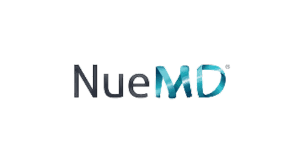How Much Does a Medical Billing Service Cost in 2024?
Medical billing services can cost from $900 to over $10,000 depending on enterprise size and whether or not you want on-site servers. Web-based or “cloud” software runs on off-site servers and can cost as little as $30 to $127 per month.
COMPARE QUOTESMedical billing services charge in one of the following ways:
- Percentage-Based Fee: This is the most common pricing model. The billing service charges a percentage of the collected revenue, usually ranging from 5% to 10% of the practice’s collections. This model aligns the billing company’s incentives with the practice’s revenue performance.
- Flat Fee per Claim: Some services charge a fixed amount for each claim they process, regardless of the claim’s value. This fee can range from around $1 to $10 per claim.
- Monthly Fixed Rate: Less common, this model involves a fixed monthly fee regardless of the number of claims or the revenue collected. This can be advantageous for practices with high billing volumes but may be less cost-effective for smaller practices.
- Hybrid Models: Some services use a combination of the above methods.
Extra fees may apply for services like patient billing inquiries, coding, or practice management services.
Featured Medical Billing Service Solutions

AdvancedMD
- Billing Service & Software
- Practice Management
- Monthly Fee: 4%-6% of Collected
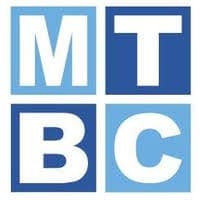

MTBC PracticePro
- Patient Scheduling Tools
- $995 Set Up Fee
- Monthly Fee: 5% of Collected


Kareo
- 75,000 Providers us Kareo
- 45 Medical Specialties
- Monthly Fee: $130-$300/Provider
Medical Billing Service Companies and Costs
We have reviewed some of the top medical billing services to help you see how the prices differ from one company to the next.
AdvanceMD
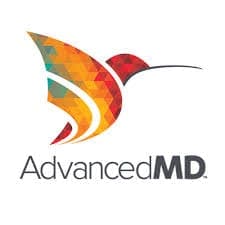

Their services work best for companies that are small to medium-sized. There are two ways to determine your pricing, either with their “build a bundle” feature or with one of their pre-configured plans.
Your best option is to build a custom bundle to ensure you get the most amount of savings. But with their preconfigured plan you can expect a 4-8% practice collections rate.
Practice Management Software
Their most popular billing bundle is $435 per month per provider. It will give you unlimited encounters and is ideal for those with a high patient volume.
Another option is a per-encounter billing system at a rate of $1.42. This usually equals out to about $150 per month per provider.
This plan is ideal for those with low patient volume. Usually, practices that are chiropractic, physical therapy, and behavioral health will select this method.
EMR/EHR Software
These plans also have an option of unlimited and per encounter billing methods. An unlimited plan can be around $729 per month per provider. This sounds expensive but will give you a great amount of savings since PM and EHR are unified.
You’ll get unlimited encounters which makes it ideal for those with high patient volume.
When it comes to getting charged per encounter it is at a rate of around $2.18. This method is also ideal for those with a low patient volume.
COMPARENueMD
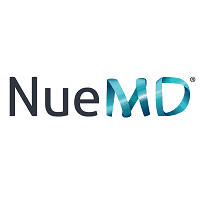

One of the best features about NueMD is that you can try out the service with a free trial. Then they offer a range of plans to fit your needs.
Practice Solution
The practical solution is $149 dollars per month. The service will then handle your patient records, scheduling, tickets, claims, and eligibility verification.
ERA, batch claims, and reporting are also included in the service.
Total Solution
The total solution starts at $199 per month. This plan includes all practice solution features. You’ll also get advanced analysis and electronic chart management.
This solution also includes inventory management and standard collection services.
Ultimate Solution
The Ultimate Solution is $249 per month. With this solution, you will get all of the features included with the total solution option.
Instead of the standard collection service though you’ll get the premium collections service. You will also get capitation service.
Electronic Health Record & Medical Billing System
If these plans don’t work for your needs then look into the electronic health records and medical billing system. Pricing for this service is done by quote.
COMPAREMTBC PracticePro


They don’t provide pricing on their website, so you’ll need to request a quote for exact pricing. This isn’t necessarily a bad thing though, as it means you’ll get a customized solution for your practice.
The PracticePro plan includes HIPAA compliance auditing, EHR management, practice management system, and patient management systems.
COMPAREKareo


Kareo Marketing
If you are looking for more than just billing services, this plan will also include marketing type services. This includes things like patient feedback, online reputation management, and other patient communication.
For the billing portion, you’ll have dedicated support from Kareo, billing, and managed billing. This plan will cost your practice $300 per month, per provider.
Kareo Billing
This plan is only billing for those looking for a focused solution. It offers billing and practice management. It can also be programmed to send automatic reminders and alerts.
You can process your patient’s credit card payments. Then manage everything from a customizable dashboard. You can even get full analytics and reporting.
You will also have a dedicated support team.
Kareo Managed Billing
This plan is customized to fit your exact needs, so you’ll need to get a quote for pricing. With this plan, you’ll have fee management, scheduling, and performance management.
You’ll have a dedicated support member from Kareo. There is also data import and export capabilities.
COMPAREMedical Billing Star
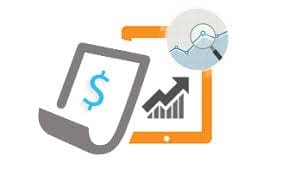

Billing Service
The first being a billing service. You will be charged at a rate of 4.99% for a team of 7 specialists. Be aware that there is a 5% increase for collections. You will also get certified billers and free EMR support.
They boast that you won’t have a monthly minimum and that your outstanding AR will have a reduction of 97%.
Billing & Coding
If you need a more robust service you can sign up for the billing and coding service. You will pay a rate of 6.99%.
With this plan, you’ll reduce your backlogged revenue, improve your coding accuracy, and have 24.7 support.
Coding
While this plan doesn’t include billing, you can have Medical Billing Star do just the coding for your practice. You’ll pay a rate of $0.99.
All of the coders are AAPC certified. You will have access to coding audits, scrubbing tools, and a centralized coding process.
COMPAREGroupOne
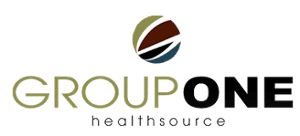

Subscriptions
There are two subscription plans that are $550 and $599. Each one gives you support for your bundled services of practice management and EHR.
These plans are the best bargain for those practices that have 1 to 3 providers. They offer cost savings for a long-term EHR solution.
Buy Your License
You can then purchase your license for $10,000. Then each additional license is $5,000. This lets you own their eClinicalWorks EHR system and have a local server.
If you need your billing solution to be scalable, then this is your best option. It is a large investment upfront, but ultimately, will be your best pricing. Plus there is the option of cloud hosting or local server installation.
OneRate
This plan will charge you a percentage of your practice’s monthly net collections. The rate you end up paying could be anywhere from 3% to 7%.
Your plan will include professional RCM services. You will also get free use of eClinicalWorks EHR and their practice management services.
This solution is best for those practices that need to reduce the potential for cash flow interruption that occurs when switching to a new EHR.
COMPAREMedical billing service prices can vary greatly depending on how robust of services you need and the type of fees setup you choose.
Keep reading to get a better understanding of your pricing options and how you can find the best bargain to outsource your bookkeeping.
Calculating the Cost of Medical Billing Services


Fee Per Claim
The first method is a fixed rate that gets charged for each claim that gets processed. This means that it doesn’t matter if the billing service processes a $55 claim or a $500 claim.
This pricing for medical billing services works very similarly to the phone answering services you have probably considered for your practice.
The potential problem with this structure is that the lower the fee, the less likely the service is to follow up. Usually, you can expect more and more follow up as the service fee goes up.
Often fee per claim pricing lacks a certain amount of incentive for the service.
Percent
There are three different methods medical billing services will use to charge a percentage of the client’s collections. You will need to look at the different methods and compare the potential costs of each.
First
The first method for fees would be to charge a percentage of the net payments collected. This is great because it means that the service only gets paid based on the total amount you get paid.
There is a level of accountability and incentive built into the agreement.
Second
The second option is to get billed based on the gross number of claims submitted. This can mean enticing percentages in fees for you. but it also removes the incentive for the service to aggressively collect on those fees you are owed.
Third
The third method will hand over all collections actions to the billing service. This will mean that they will handle everything including deductibles, co-pays, and any denied claims.
This is the most common method used for practices that use comprehensive management agreements.
Hybrid
The third most common method for billing fees is to do a hybrid of both. This means that some submissions will get handled by charging a flat fee. While others will get charged by percentage.
This method of billing arose because some insurance companies began to reject the percentage-based billing. The hybrid method was used to keep clients from getting dropped by the insurance carrier.
There is also the fact that some states have deemed the percentage-based billing as illegal.
COMPARE QUOTESVideo Presentation:
Fees to Avoid When Outsourcing Medical Billing Service?
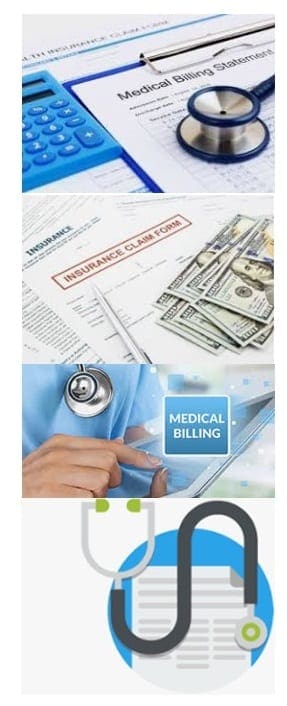

Outsourcing medical billing services can be highly beneficial for healthcare providers, streamlining processes and improving cash flow. However, there are several potential fees you should be aware of to avoid unnecessary costs:
- Startup Fees: Some medical billing services charge an initial fee to start the service. This might include costs for software setup, training, and initial account work. It’s worth shopping around to see if this fee can be negotiated or waived.
- Percentage of Collections: Most billing services charge a percentage of the collections they process. While this is standard, the rate can vary significantly. Ensure you’re getting a competitive rate and that the percentage is only taken from successfully collected funds, not just billed amounts.
- Cancellation Fees: If you decide to terminate the service, some companies may charge a cancellation fee. Be sure to understand the terms of your contract and whether such fees are applicable.
- Minimum Monthly Fees: Some services require a minimum monthly payment regardless of the volume of billing processed. This can be a concern for smaller practices with lower patient volumes.
- Hidden Fees: Be wary of hidden fees such as fees for printing and sending statements, fees for processing patient inquiries, or additional charges for coding services.
- Data Conversion Fees: If you’re switching from another billing service or an in-house system, there might be a fee for transferring your existing data into the new system.
- Compliance and Security Fees: While compliance with regulations like HIPAA is essential, ensure these costs are transparent and justified.
- Support and Training Fees: Some services might charge extra for ongoing support, training, and software updates. Understand what is included in your contract.
To avoid these fees:
- Negotiate: Always negotiate terms before signing a contract. Ask if any of the fees can be reduced or waived.
- Compare Providers: Shop around and compare different providers to find the best value.
- Read the Fine Print: Carefully read the contract to understand all the fees involved.
- Ask Questions: Don’t hesitate to ask the service provider to explain any fees you do not understand.
- Performance-Based Contracts: Consider a contract where fees align with the performance or success rate of the billing service.
Remember, the cheapest option isn’t always the best. Quality of service, expertise, and reliability are critical factors in choosing a medical billing service.
Medical Billing Service Sample Costs
Below are a few examples of price facts for Medical Billing Services which will give you an idea of how much you will pay for your purchase.
- 8% average cost by the percentage of collected medical debt.
- Medeye services range between 2% to 4% on average.
- Most set-up fees are free but a few can cost as much as $260 to $1,0300.
- Emperia Medical Billing is generally 4% of all collected revenue.
Get Matched up With Medical Billing Service Providers With Up To Five Money Saving Quotes
COMPARE QUOTESArticle Sources:
https://www.beckershospitalreview.com/finance/11-key-statistics-about-the-healthcare-payment-market.html
https://healthcareinamerica.us/medical-billing-errors-are-seriously-hurting-healthcare-67d134441adc
Related Articles::
